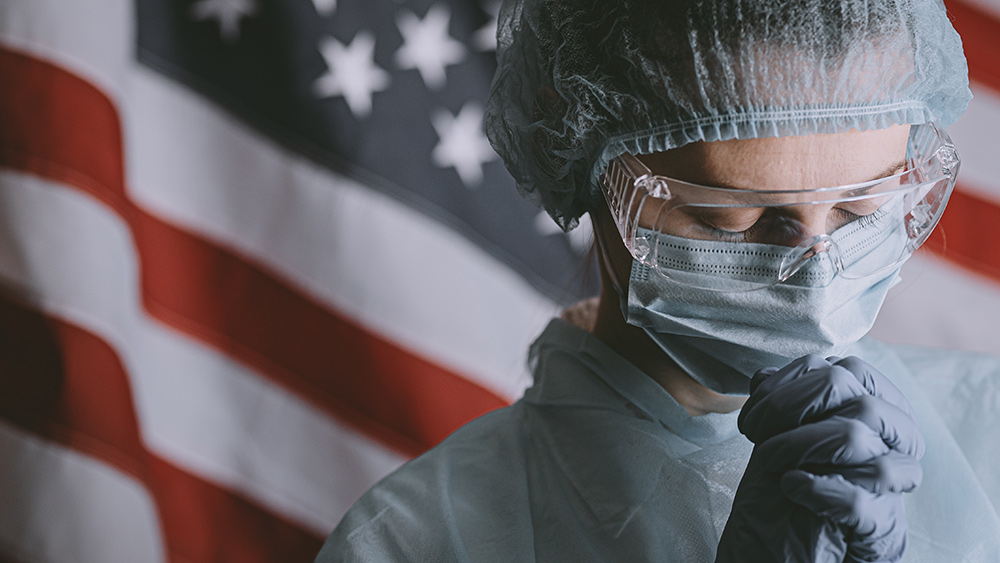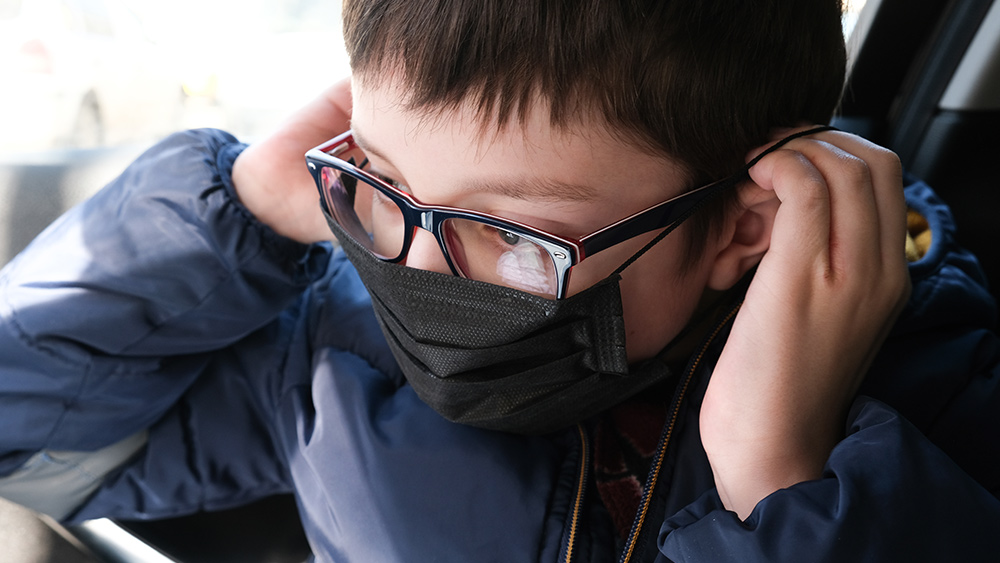Coronavirus leaves recovered patients with SCARRED lungs
04/29/2020 / By Franz Walker

Despite beating COVID-19, the worst is not yet over for coronavirus survivors. Some, particularly those who had to grapple with severe symptoms, now find themselves facing yet another hurdle as the disease has left them with lung damage and breathing issues that can last for months.
Christina Hill is one such former patient who’s now dealing with the lasting effects of COVID-19. Hill shared her story with CBS 2 Morning Insider hoping to warn others about how bad the disease, and its after-effects, can get.
“I would never wish this on anyone,” Hill said of her experience. Due to the damage to her lungs, Hill needs to undergo oxygen therapy for the next few weeks just to help her breathe.
“I’m just happy that I’m here. So, hopefully, with the oxygen, I’ll get stronger and I’ll go back to normal,” she stated.
Normal was the last thing that Hill was feeling when she was admitted at the Silver Cross Hospital in New Lenox, Illinois earlier this month. Back then, she was experiencing chills, body aches, a nasty cough and a fever that had already lasted for days.
Eventually, after five days in the hospital, Hill’s fever broke. But that was just the beginning of her struggles, as her doctors told her that she could experience shortness of breath for months. (Related: Coronavirus survivors face a long road ahead as they struggle with long-term damage.)
After-effects can last for months
According to doctors, COVID-19 can cause a severe form of acute respiratory distress syndrome (ARDS). It’s when this happens that patients get scars in their lungs that remain even after they heal.
“You can even see scarring in the lungs (in some cases), and that scarring can even be permanent, and this is the most severe cases,” said Dr. Jason Rho, a pulmonologist at Northwestern Medicine Lake Forest Hospital.
A coronavirus causing scarring in the lungs isn’t new. Respiratory illnesses caused by coronaviruses such as Severe Acute Respiratory Syndrome (SARS) and Middle East Respiratory Syndrome (MERS) have also been found to cause lung scarring.
However, initial lung images from SARS and MERS patients show that these typically only cause damage to one lung. In contrast, a study conducted by researchers from the Huazhong University of Science and Technology found that COVID-19 is more likely to infect and cause damage to both lungs.
More importantly, the CT scans of COVID-19 patients involved with the study showed that the majority of them have lung lesions which are likely to form scars.
Some scars do not disappear
While some COVID-19 survivors will see the scarring in their lungs gradually disappear, others may not be so lucky. In some patients, lung abnormalities will harden into layers of scar tissue and cause pulmonary fibrosis. This lung disease causes the walls of the air sacs to become thicker and stiffer, making it harder for them to get oxygen. People with pulmonary fibrosis suffer from shortness of breath, which limits their ability to be physically active.
According to Dr. Qi Xiaolong from the First Hospital of Lanzhou University in China, patients who are most vulnerable to pulmonary fibrosis include older adults who’ve had severe bouts of COVID-19 pneumonia, patients with cancer, diabetes and other serious diseases, and those with lung conditions caused by pollution or smoking.
Ironically, it may be a hyperactive immune system that’s causing the scarring. A sudden deluge of molecules called inflammatory cytokines causes the inflammation that damages lung tissue and fills the air sacs with pus. In the most severe cases, the thickened scar tissue that results from this inflammation forms honeycomb-shaped clusters. This phenomenon was first observed in SARS and MERS survivors.
Some of the scarring, however, may not be caused by the body’s immune response. Again, based on previous experiences with MERS survivors, some experts are beginning to suspect that the ventilators used to help patients breathe may also cause scarring.
“Oxygen is being infused with positive pressure, and when the lungs get inflated beyond their limits, it causes trauma,” explained Karuna Das, a radiologist from the United Arab Emirates University.
If that is the case, then it paints a grim picture for patients who’ve had to use ventilators for COVID-19. In a 2017 study by Das and colleagues that appeared in the Indian Journal of Radiology and Imaging, they noted that MERS patients who had suffered lung damage still had not recovered after seven months.
Sources include:
Tagged Under: acute respiratory distress syndrome, ARDS, breathing difficulties, China, coronavirus, coronavirus survivors, covid-19, infections, infectious diseases, long term side-effects, lung damage, lung health, lung scarring, Lungs, outbreak, pandemic, pulmonary fibrosis, respiratory, superbugs




















